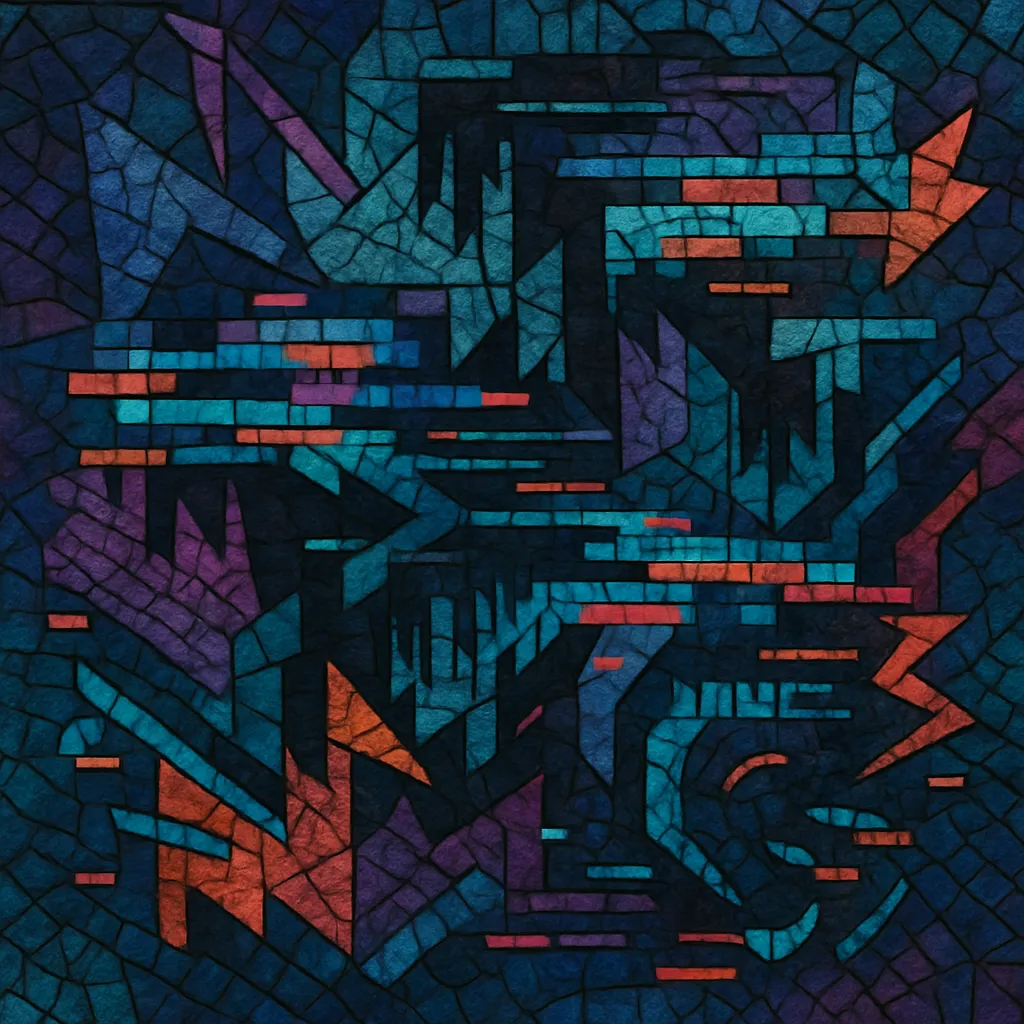Glitch hop blends the rhythmic foundations of hip hop with the sound-design ethos of glitch and IDM. It is characterized by half-time, head-nodding grooves, intricately edited drums, and meticulous digital processing such as stutter edits, bit-crushing, time-stretch artifacts, and granular slicing.
Typically sitting around 80–110 BPM (often felt in half-time), the style emphasizes heavy, syncopated bass lines, swung percussion, and detailed micro-edits that create a "broken yet groovy" feel. While largely instrumental, it often incorporates vocal chops, turntable scratches, and foley textures to add human feel and narrative color.
Glitch hop emerged in the United States—especially within the Los Angeles beat scene centered around events like Low End Theory—where producers fused hip hop’s boom-bap sensibility with the experimental DSP techniques of glitch and IDM. Early adopters drew from abstract hip hop, trip hop, and breakbeat while adopting laptop-centric performance, live controllerism, and turntablism aesthetics. The sonic identity coalesced around swung, half-time rhythms and hyper-detailed edits that showcased digital artifacts as musical features.
In the early 2010s, the genre moved from clubs to festivals, propelled by artists who emphasized cinematic bass design and precision editing. Cross-pollination with dubstep and bass music refined the midtempo "wobble" aesthetic, while European acts introduced neuro-leaning sound design and cleaner, funk-forward grooves. Labels, netlabels, and online communities helped standardize a toolkit of glitch processing, while DAW-native effects (Beat Repeat, buffer shufflers) and dedicated plugins (dBlue Glitch, Effectrix, Stutter Edit) became staples.
By the mid-to-late 2010s, glitch hop fed directly into substyles like neurohop, midtempo bass, and EDM-oriented glitch hop. Its precision editing, foley-forward textures, and half-time swing strongly influenced hybrid trap and broader bass music production practices. Today, glitch hop’s legacy persists in the meticulous sound design and arrangement techniques found across modern bass music, even as the genre itself oscillates between underground scenes and festival-ready variants.
Write at 80–110 BPM and feel the groove in half-time to achieve head-nod momentum. Use swung sixteenths or subtle triplet inflection, and build syncopated kick–snare patterns with ghost notes and rimshots for nuance. Fill transitions with rapid stutters, rolls, and micro-edits that accent phrase endings.
Design a weighty, clean sub (often sine or lightly distorted) and a textured mid-bass that modulates with filters, FM, or wavefolding. Embrace deliberate digital artifacts—buffer repeats, bit-crushing, abrupt time-stretches, tape-stop, and granular slices—to create the signature “glitch.” Layer foley and found sounds, then gate, slice, and rhythmically re-sequence them to add organic motion. Common tools include Ableton Beat Repeat, Sugar Bytes Effectrix, dBlue Glitch, iZotope Stutter Edit, and modular environments like Reaktor or Max for Live.
Favor modal minor and pentatonic palettes for groove-forward, funk-tinged motifs. Short, hook-like riffs work well; punctuate with pitch-bent leads, chopped vocal one-shots, or warped instrumental snippets. Use extended chords sparingly to maintain low-end headroom, reserving richer harmony for intros, breakdowns, and pads.
Structure tracks with atmospheric intros, a first drop that establishes the main bass motif, evolving A/B sections with alternating edits, and dense fill work at section boundaries. Contrast meticulously edited sections with moments of space to reset the ear. Build energy via automation (filter sweeps, distortion intensity, transient shaping) rather than solely by adding layers.
Leave ample headroom; keep the sub mono and precisely managed with sidechain ducking under the kick. Sharpen transients on drums while softening clicky mids in bass layers. Use wide stereo imaging on foley and high-frequency percussion but anchor core elements centrally. For live sets, map effect chains and stutter triggers to controllers to perform edits in real time.


